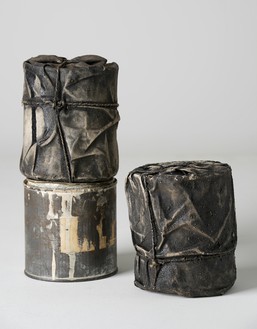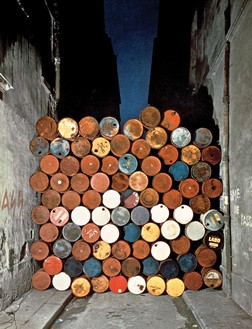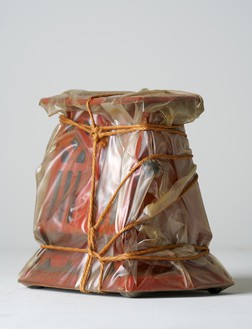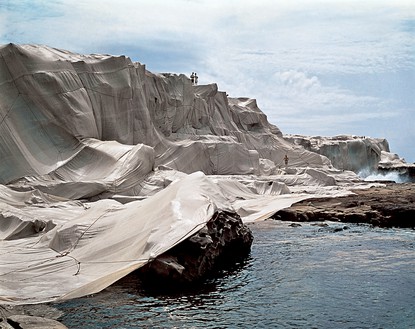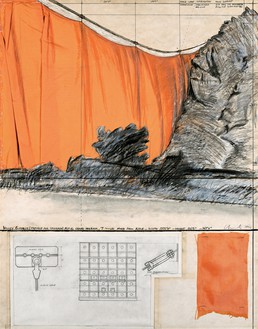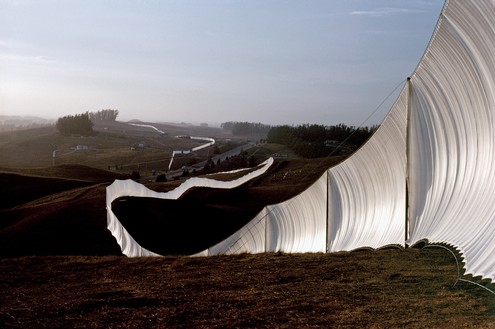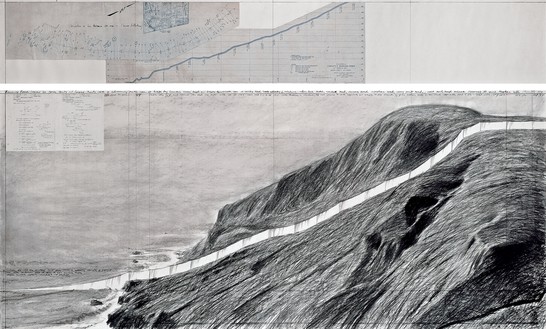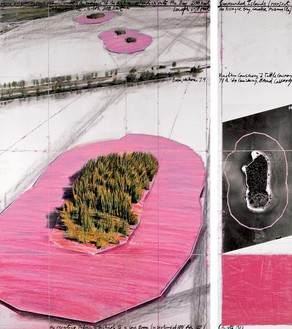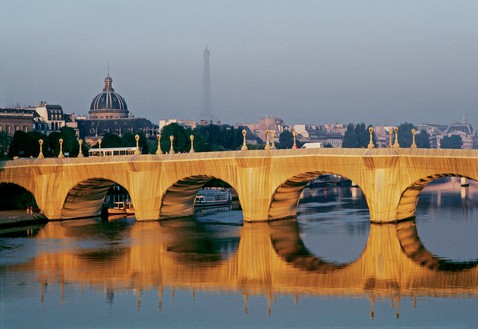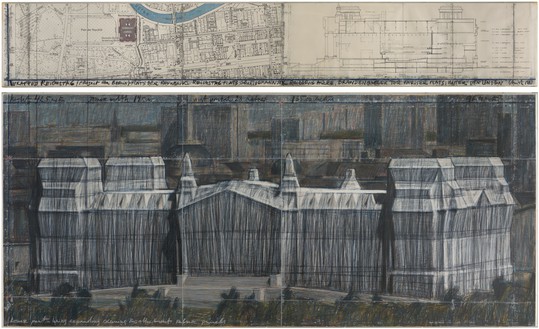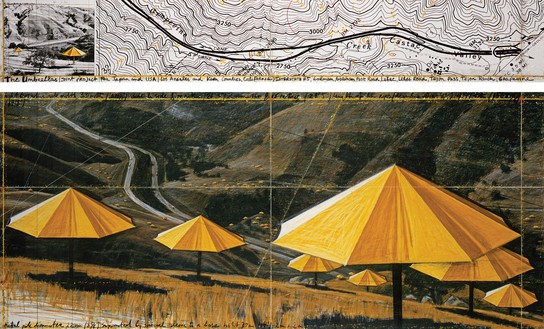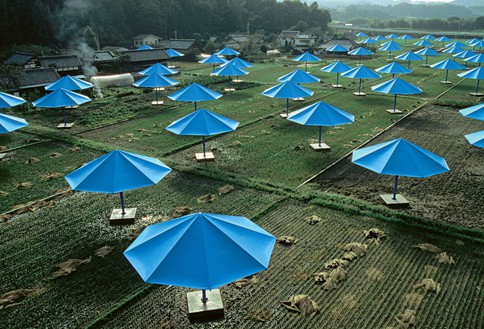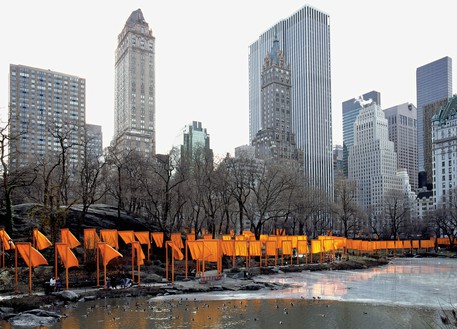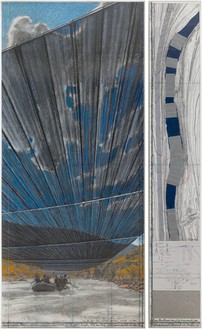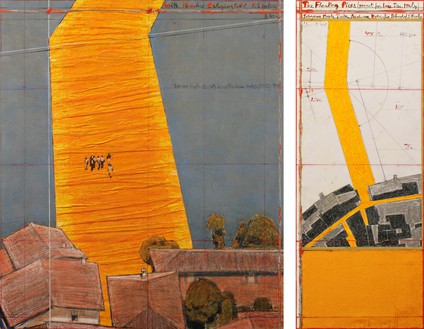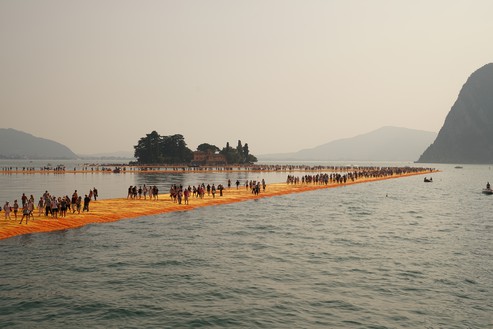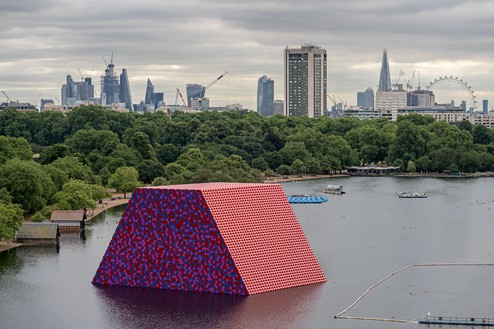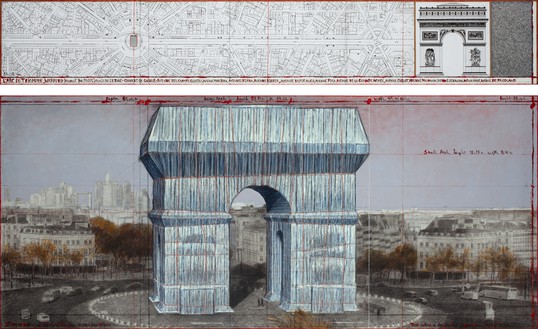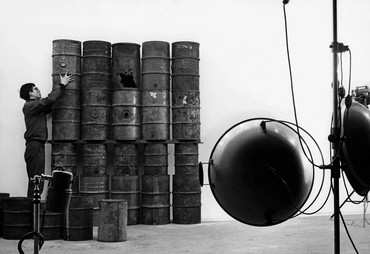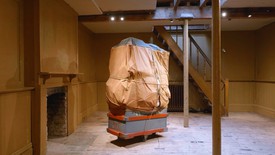About
In monumental sculptures produced and installed in public sites around the world, Christo and Jeanne-Claude expanded the possibilities of artistic scale and dramatically—but temporarily—transformed familiar landscapes. Employing fabric, rope, barrels, and other commonplace materials to visually alter both urban and rural spaces, their works created shared experiences across the globe. Often requiring many years of planning and negotiation, these projects exist only for a few days to a few weeks, after which their materials are recycled or reused and the sites are restored to their original state. Christo worked collaboratively with his wife Jeanne-Claude from 1961 until her death in 2009.
Christo Vladimirov Javacheff was born in 1935 in Gabrovo, Bulgaria. He studied under the Communist regime at the National Academy of Art, Sofia, from 1952 to 1956. His escape to the West took him through Prague and Vienna, where he spent one semester at the Academy of Fine Arts before relocating to Geneva and then Paris. He arrived in the city in 1958, and met Jeanne-Claude Denat de Guillebon (born on the same day as Christo in Casablanca, Morocco), who became not only his wife but his life partner in the creation of monumental environmental works of art. The couple had a son in 1960 and moved to New York four years later.
Christo’s early works—assemblages of found objects such as cans, bicycles, and road signs—were inspired by the blurring of boundaries between art and environment in works of Nouveau Réalisme by artists such as Jean Tinguely and Yves Klein. Surfaces d’Empaquetage (1958–61), Christo’s first artistic experiments, are composed of crumpled sheets of fabric or paper coated with lacquer and sand, while Cratères (1959–60) feature highly textured reliefs made from paint, glue, and sand. His Store Fronts series (1964–68) incorporated salvaged architectural elements resembling shop windows, their glass panels covered with paper or fabric to obstruct the view inside. Most of Christo’s first Wrapped Objects (1958–69) comprise art materials swathed in resin-soaked canvas; others employ fabric or polyethylene bound with rope, which alternately reveal and conceal the items’ identities.
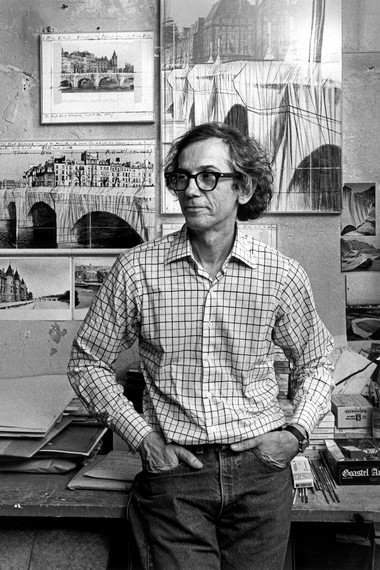
Photo: Wolfgang Volz © Christo and Jeanne-Claude Foundation
#Christo
Website
Christo: Early Works
Christo: Early Works, curated by Elena Geuna, is the inaugural exhibition in the Gagosian Open series of off-site projects. In this video, Geuna explores the connection between Christo’s sculptural works and their setting in the historic Georgian house at 4 Princelet Street, London.
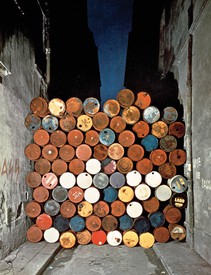
The Iron Curtain: Christo & Jeanne-Claude
To mark the sixtieth anniversary of Christo and Jeanne-Claude’s seminal installation The Iron Curtain, author William Middleton addresses the radicality of this work and its enduring relevance to the artists’ subsequent projects.
Fairs, Events & Announcements

Performance
Lucinda Chua
On Christo
Saturday, October 7, 2023, 3:30pm and 5:30pm
Gagosian Open, 4 Princelet Street, London
Join Gagosian for a performance by Lucinda Chua inside Christo: Early Works, the inaugural exhibition, curated by Elena Geuna, in the Gagosian Open series of off-site projects. The multi-instrumentalist, singer, and producer will perform two improvised pieces in response to Christo’s early works and the unique architecture of 4 Princelet Street in the Spitalfields area of London. Born in London, Chua has English, Malaysian, and ancestral Chinese roots, deep connections that are excavated in her recent album, YIAN (2023), which, as Pitchfork writes, “gathers the threads that link home, history, and their relationship to the body.” Primarily using her voice, a cello, and an array of effects units, Chua will infuse the historic building with her distinctive sound blending intimacy, atmosphere, and haunting enchantment. No advance registration is required, but space is limited and will be granted on a first-come, first-served basis.
Lucinda Chua. Photo: Yukitaka Amemiya
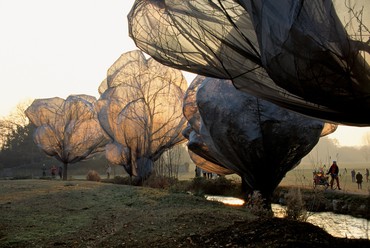
Visit
Kunsttage Basel 2023
Christo: Selected Works
August 25–27, 2023
Basel
kunsttagebasel.ch
Kunsttage Basel is a citywide program of art events at more than sixty museums, galleries, and other spaces. The exhibition Christo: Selected Works, featuring sculptures and works on paper by the artist, will be on view at Gagosian, Basel, with extended hours throughout the weekend. The presentation marks the twenty-fifth anniversary of Christo and Jeanne-Claude’s last project in the city in 1998, when they wrapped 178 trees around the Fondation Beyeler in 55,000 square meters of woven polyester fabric.
Friday, August 25, 12–8pm
Saturday, August 26, 10am–6pm
Sunday, August 27, 10am–6pm
Christo and Jeanne-Claude, Wrapped Trees, Fondation Beyeler and Berower Park, Riehen, Switzerland, 1997–98 © Christo and Jeanne-Claude Foundation. Photo: Wolfgang Volz
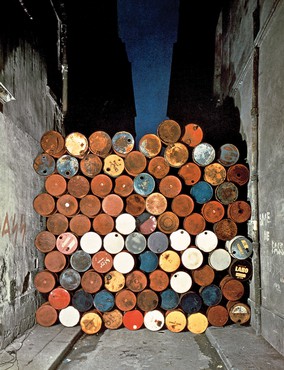
Honor
Wall of Oil Barrels—The Iron Curtain, Rue Visconti, Paris, 1961–62
Sixty-Year Anniversary Celebration
Monday, June 27, 2022, 9pm
rue Visconti, Paris
On the evening of June 27, 1962, Christo and Jeanne-Claude installed Wall of Oil Barrels—The Iron Curtain, Rue Visconti, Paris, 1961–62, closing the historic rue Visconti with eighty-nine barrels. The 4.2-meter-high barricade blocked one of narrowest streets in Paris for eight hours, obstructing most of the traffic through the Left Bank. To celebrate the sixty-year anniversary of the work, the city of Paris is closing the street and visitors on-site will be able to activate an augmented-reality animation of the barrels. The event is free and open to the public.
Christo and Jeanne-Claude’s Wall of Oil Barrels—The Iron Curtain, Rue Visconti, Paris, 1961–62 (1961–62), Paris, June 27, 1962. Artwork © Christo and Jeanne-Claude Foundation. Photo: Jean-Dominique Lajoux
Museum Exhibitions
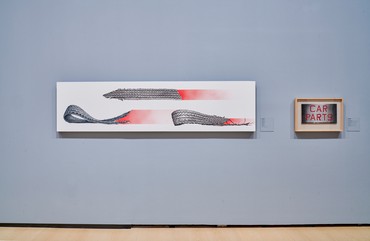
Closed
Motion
Autos, Art, Architecture
April 8–September 18, 2022
Guggenheim Bilbao, Spain
www.guggenheim-bilbao.eus
Motion. Autos, Art, Architecture celebrates the artistic dimension of the automobile and links it to the parallel worlds of painting, sculpture, architecture, photography, and film. The exhibition brings together nearly forty automobiles that are placed center stage in the galleries and surrounded by significant works of art and architecture. Work by Alexander Calder, Christo, Andreas Gursky, Ed Ruscha, and Andy Warhol is included.
Installation view, Motion. Autos, Art, Architecture, Guggenheim Bilbao, Spain, April 8–September 18, 2022. Artwork © Ed Ruscha. Photo: courtesy Guggenheim Museum Bilbao
